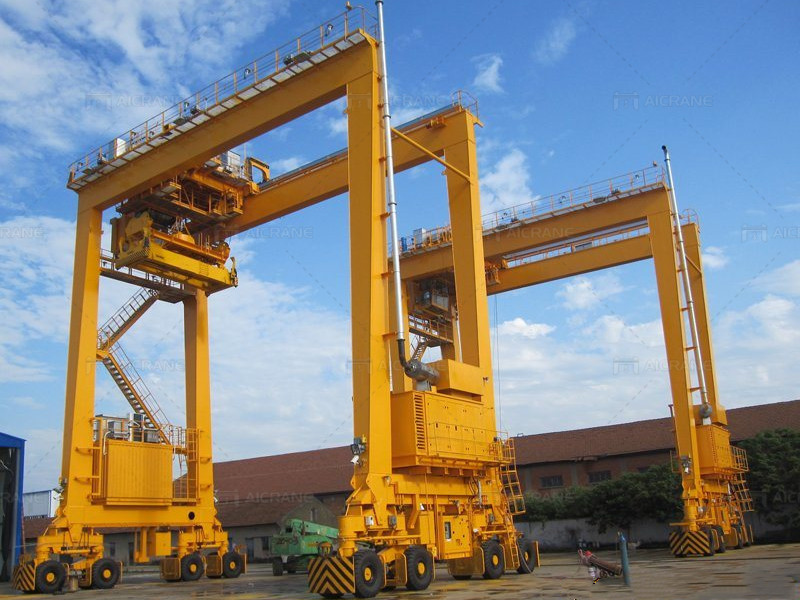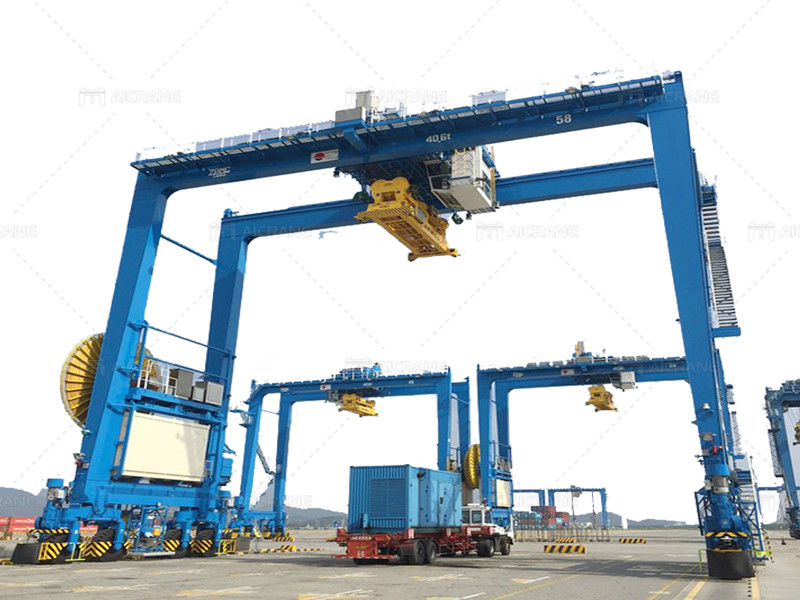Container gantry cranes are crucial for the efficient handling of containers in ports and terminals. These massive structures facilitate the loading and unloading of cargo ships, ensuring smooth logistical operations. If you are in the market for a container gantry crane, establishing contact with reputable manufacturers is a significant first step. However, the process can be intricate and requires thorough preparation. This article provides comprehensive tips for contacting container gantry crane manufacturers to ensure a successful and productive interaction.

Research and Identify Potential Manufacturers
Before reaching out to manufacturers, it’s essential to conduct thorough research and identify potential suppliers. The following steps can guide your research:
Industry Reputation: Look for manufacturers (https://aicranemachine.com/) with a strong industry reputation. Reviews, case studies, and testimonials from previous clients can provide valuable insights.
Experience and Expertise: Check the manufacturer’s experience in the industry. Companies with a long history are likely to have refined their products and services over time.
Product Range: Ensure the manufacturer offers a range of container gantry cranes that meet your specific requirements. Look for details on their website, brochures, or product catalogs.
Certifications and Standards: Verify if the manufacturer complies with international standards and holds relevant certifications. This ensures the quality and safety of their products.
Prepare Your Requirements
Before contacting manufacturers, clearly define your requirements. Having a detailed understanding of your needs will facilitate more productive discussions. Consider the following aspects:
Type of Gantry Crane: Determine the type of gantry crane you need (e.g., rail-mounted gantry crane, rubber-tired gantry crane).
Capacity and Dimensions: Specify the lifting capacity, span, height, and other dimensions that meet your operational needs.
Operational Environment: Describe the environment where the crane will be used, including climate conditions, space constraints, and any specific operational challenges.
Budget and Timeline: Establish a budget range and timeline for the procurement and installation of the crane.
Initial Contact
When you are ready to contact manufacturers, the initial communication is crucial. Here are some tips for making a positive first impression:
Professional Email: Send a professional email introducing yourself and your company. Clearly state your interest in their container gantry cranes and provide a brief overview of your requirements.
Contact Form: Many manufacturers have contact forms on their websites. Fill out these forms with accurate and detailed information to ensure your inquiry reaches the right department.
Follow-Up Call: If you don’t receive a response within a few days, consider making a follow-up call. This demonstrates your serious interest and can expedite the communication process.
Ask the Right Questions
When you start interacting with manufacturers, asking the right questions is essential to gather the information you need. Here are some key questions to consider:
Product Specifications: Request detailed specifications for the cranes they offer, including technical drawings, load charts, and material specifications.
Customization Options: Inquire about customization options to ensure the crane can be tailored to your specific needs.
Lead Time: Ask about the lead time for manufacturing and delivery. Ensure it aligns with your project timeline.
Pricing and Payment Terms: Request a detailed quote, including all costs (e.g., crane, installation, shipping, and any additional services). Clarify payment terms and conditions.
Warranty and Support: Inquire about the warranty period, after-sales support, and availability of spare parts.

Evaluate Proposals
After receiving proposals from different manufacturers, carefully evaluate them based on several factors:
Cost vs. Value: Consider not only the initial cost but also the long-term value. A slightly more expensive crane with better features and support may be more cost-effective in the long run.
Technical Compatibility: Ensure the proposed cranes meet your technical requirements and operational needs.
Manufacturer Reputation: Consider the manufacturer’s reputation, past performance, and client feedback.
After-Sales Support: Evaluate the quality and availability of after-sales support, including maintenance services and spare parts.
Request Site Visits and Demonstrations
If possible, request site visits and demonstrations to see the cranes in action. This provides an opportunity to assess the build quality, performance, and ease of operation. It also allows you to interact with the manufacturer’s team and ask any additional questions.
Negotiate Terms and Finalize the Contract
Once you have selected a manufacturer, negotiate the terms and conditions of the contract. This includes:
Price and Payment Terms: Negotiate the final price and agree on payment terms that are mutually beneficial.
Delivery and Installation: Clarify the delivery schedule and installation process. Ensure the manufacturer provides a clear timeline and plan.
Warranty and Support: Ensure the warranty terms are clearly defined and that you have access to reliable after-sales support.
Maintain Communication
Maintaining open and regular communication with the manufacturer throughout the procurement and installation process is crucial. Regular updates and discussions can help address any issues promptly and ensure the project stays on track.
Post-Installation Support
After the crane is installed, continue to engage with the manufacturer for ongoing support and maintenance. This ensures the crane operates efficiently and any issues are resolved quickly.
Contacting container gantry crane manufacturers involves a well-planned and methodical approach. By conducting thorough research, preparing detailed requirements, and asking the right questions, you can identify the best manufacturer for your needs. Evaluating proposals carefully, requesting site visits, and negotiating terms ensures you get a high-quality crane that meets your operational requirements. Maintaining ongoing communication and post-installation support further enhances the success of your investment. Following these tips will help you navigate the process effectively and establish a productive relationship with your chosen manufacturer.